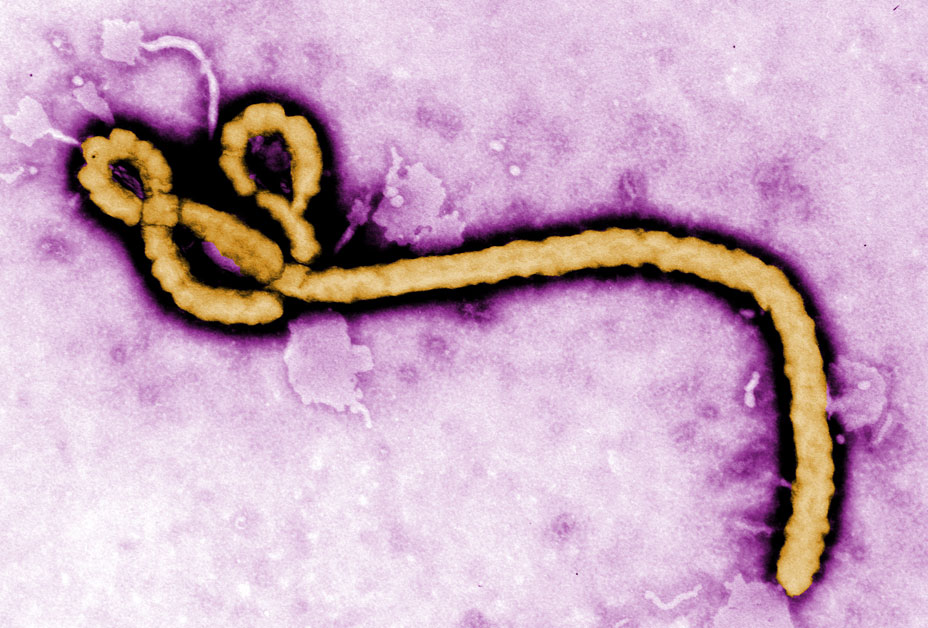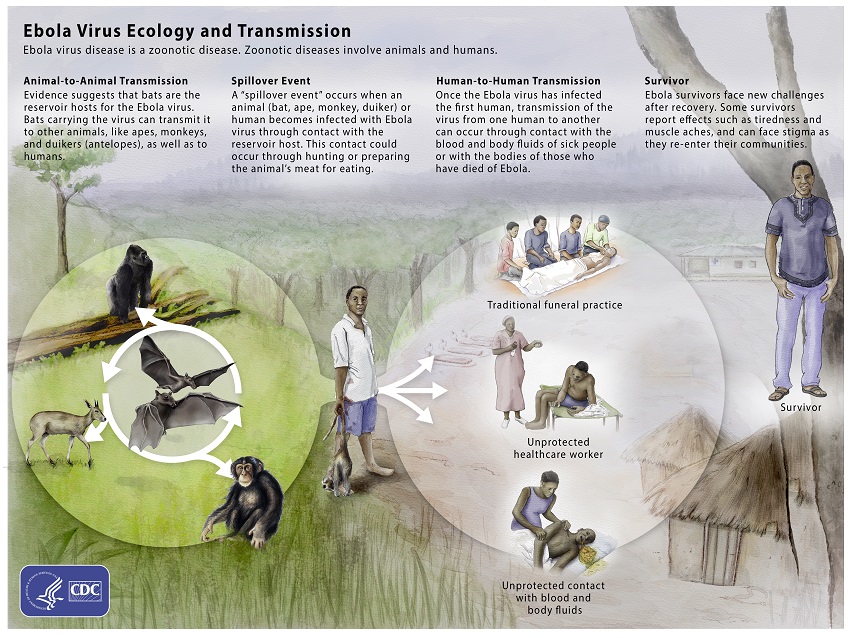Ebola
[ē-ˈbō-lə]

Ebola is a rare and deadly disease that was first discovered near the Ebola River in what is now the Democratic Republic of the Congo. Since then, outbreaks have occurred sporadically in several African countries. Scientists believe that Ebola outbreaks start when a person is infected through contact with an infected animal, such as a fruit bat or primate (monkeys and apes). The disease can then spread from person to person through contact with infected blood or body fluids. Healthcare workers as well as family and friends in close contact with sick Ebola patients are at the highest risk of getting Ebola because they may come in contact with infected body fluids.
Quiz
Key Facts
- Ebola is not a respiratory disease, so it is not transmitted through the air.
- Ebola is spread through direct contact (through broken skin or mucous membranes) with blood and other body fluids (like urine, feces, saliva, vomit, sweat, and semen) of a person who is sick with or died of Ebola.
- Ebola can also spread through direct contact with contaminated objects (like needles or syringes), infected animals, or semen from a man who recovered from Ebola.
- Signs and symptoms of Ebola include fever, severe headache, muscle pain, weakness, fatigue, vomiting, diarrhea, stomach pain, and unexplained bleeding.
- The incubation period for Ebola, from exposure to when signs or symptoms appear, can be anywhere from 2 to 21 days. The average is 8 to 10 days.
Media
Prevention Tips
- Avoid contact with other people’s blood and body fluids.
- Do not handle items that may have come in contact with an infected person’s blood or body fluids (like clothes, bedding, or needles).
- Avoid funeral or burial rituals that require handling the body of someone who has died from Ebola.
- Avoid contact with bats, monkeys, and apes, or the raw meat from these animals.
- Avoid facilities where Ebola patients are being treated.
- Practice careful hygiene. Wash your hands with soap and water or an alcohol-based hand sanitizer.
- Visit CDC Travelers’ Health for travel advice and country-specific travel information.
- If you have traveled to an area with an Ebola outbreak, seek medical care immediately if you develop fever, headache, diarrhea, vomiting, stomach pain, or unexplained bleeding.
Page last reviewed: April 17, 2019
Content source: Centers for Disease Control and Prevention




